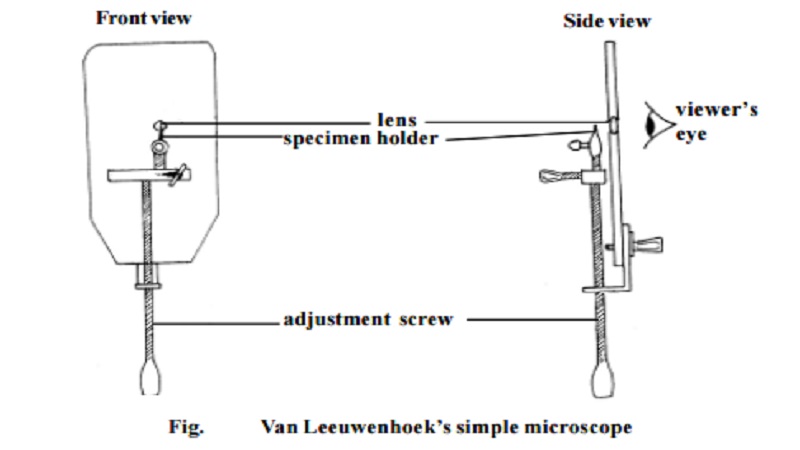Chapter: BIOLOGY (ZOOLOGY) Standard XI first year 11th text book Assignment topics question and answer Explanation Definition
Microscopy and Anton van Leeuwenhoek simple microscope

Microscopy
The cells are very minute and complex organisations. The small dimensions and transparent nature of cell and its organelles pose problems to cell biologists trying to understand its organisation and functioning. Various instruments and techniques have been developed to study cell structure, molecular organization and function.
The diameters of majority of cells range from 5-500 Å m, but most are between 10-150 Å m. The systeme International (SI) units of length are
1 metre (m) = 1000 millimetres (mm)
1 mm (10-3m) = 1000 micrometres (Å m)
1 Å m (10 -6m) = 1000 nanometres (nm)
1 nm (10-9m) = 1000 picometres (pm)
The Angstrom (Å ) is 10 -10 m. It is sometimes used to record the thickness of cell membranes and the sizes of macromolecules.
While viewing objects, human eyes have limited distinguishing or re-solving power. The ability to reveal minute details is expressed in terms oflimit of resolution. It is 'the smalllest distance that may separate two points on an object and still permit their observation as distinct separate points'. The resolving power of naked human eye is 0.1 mm or 100 Å m. It means that we cannot differentiate any points that are closer than this. Hence we need in-struments capable of high resolution to see smaller objects.
Power of magnification is different from resolving power. Magnifi-cation is 'the increase in size of optical image over the size of the object being viewed'. Increased magnification without improved resolution results only in a large blurred image. The human eye has no power of magnification.
The first useful compound microscope was invented by Francis Janssen and Zacharias Janssen in 1590. It had two lenses with magnifica-tion powers between 10x and 30x. Galileo Galilei (1564-1642) invented a simple microscope to study the compound eye of insects. His microscope had only one magnifying lens. Marcello Malpighi (1628-1694) an Italian microanatomist used a microscope to study organ tissues of animals. Robert Hooke an English microscopist in 1665 examined a slice of cork tissue under a compound microscope built by him. He coined the term 'cells' to honey comb of cells in cork tissue.
Anton van Leeuwenhoek (1632-1723) improved the quality of lenses used in microscopes. His microscopes achieved magnification upto 300x. He was the first to observe free living cells.
Further advancements in cell biology were made by improving the quality of compound microscopes.
Related Topics